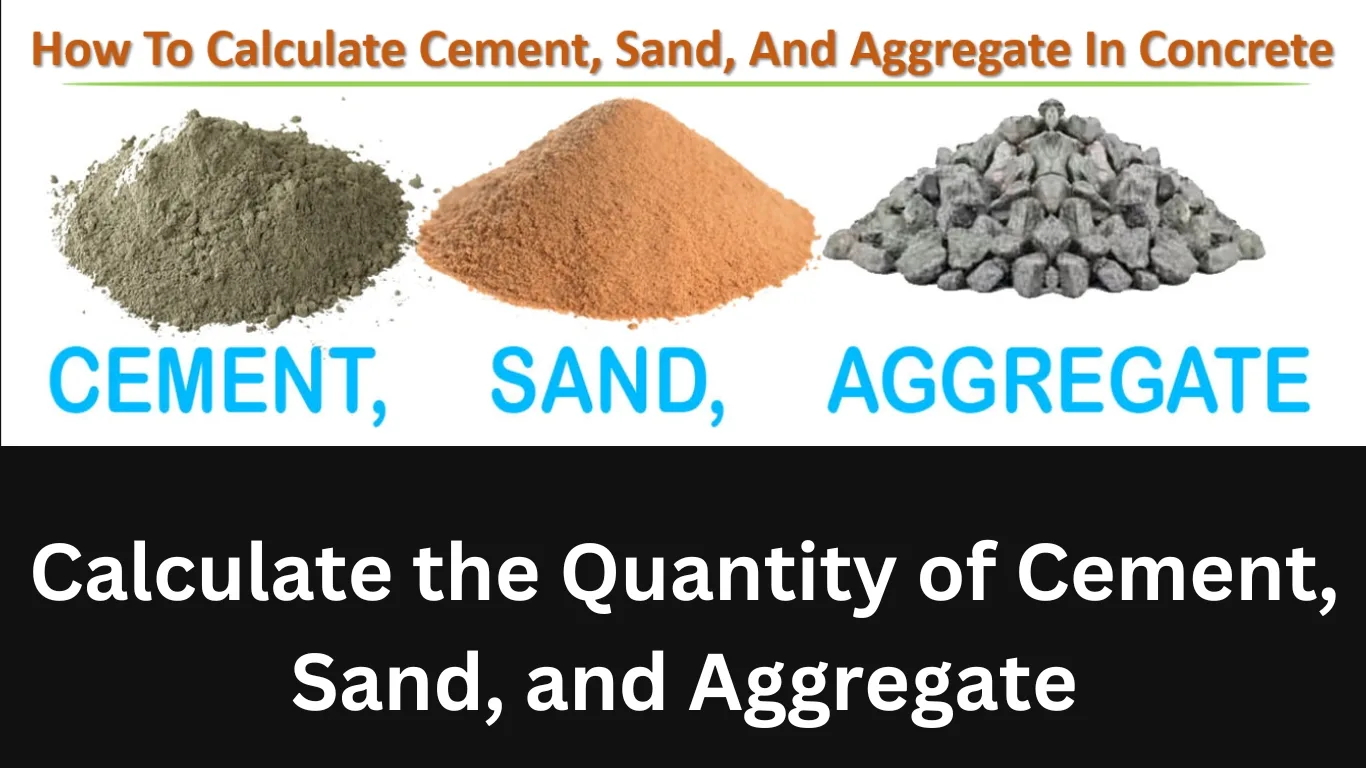Calculate the Quantity of Cement, Sand, and Aggregate
To calculate the quantity of cement, sand, and aggregate in concrete, you need to know the mix ratio of the concrete, which is usually expressed as a percentage or a ratio of cement, sand, and aggregate. The most common mix ratios are 1:2:4, 1:3:6, 1:4:8, etc.
Cement is a building material that is used as a binding agent to hold together other materials such as sand, gravel, and water to form concrete. It is made by heating a mixture of limestone and clay to high temperatures, and then grinding the resulting material into a fine powder.
Once you know the mix ratio, you can calculate the quantity of each material by multiplying the volume of concrete you need by the percentage or ratio of each material.
For example,
if you need 1 cubic meter of concrete with a mix ratio of 1:2:4, the quantity of each material would be:
- Cement: 1 x 1 / (1 + 2 + 4) = 1/7 m³
- Sand: 1 x 2 / (1 + 2 + 4) = 2/7 m³
- Aggregate: 1 x 4 / (1 + 2 + 4) = 4/7 m³
Then, you can convert these volumes into the mass (weight) of each material using the density of each material. For example, the density of cement is typically around 1440 kg/m³, the density of sand is around 1600-1700 kg/m³, and the density of aggregate is around 2400-2600 kg/m³.
Join Telegram Channel Click Here
Civil Engineering Job Updates Click Here
It is important to note that the actual mix ratios and densities may vary depending on the type of cement, sand, and aggregate used and the specifications of the concrete mix design. Always consult with a professional or the manufacturer’s guidelines for accurate quantities.
Calculate the Quantity of Cement, Sand, and Aggregate
